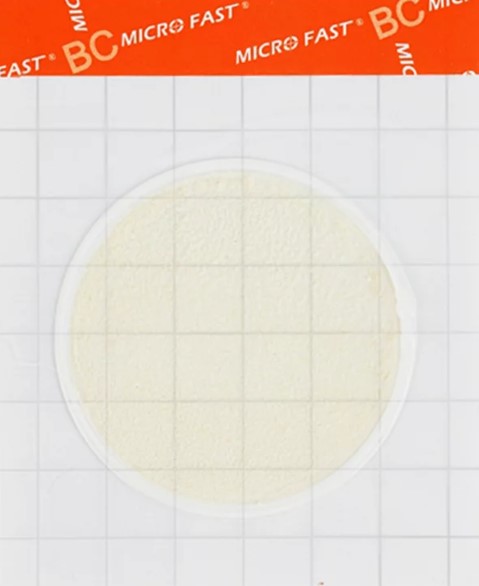How to get a tick safely and when to go to the doctor? Instructions for fighting bloodsuckers
If it seems to you that in recent years there has been too much talk about an increase in tick activity, then... you don’t think so. There really are more of them. Infectious disease specialists tend to explain this as follows: due to the fact that dust (dichlorodiphenyltrichloroethane) accumulates to a high degree in plants and animals, it was decided to ban it. But it is the only poison that can stop the proliferation of ticks throughout the country.
Usually bloodsuckers begin hunting in mid-April, but in recent years the first victims have been recorded much earlier. For example, this year in the Kamenets district of the southernmost region of the country - Brest - ticks were noticed on January 31. And at the beginning of February they were already active in many districts of the Brest region. By the way, over the past year, thousands of people suffered from bites there, 4,166 of them turned to doctors for help.
- The fact that ticks begin to wake up early is due to ongoing climate changes. In recent years, there have been warm, short winters. Bloodsuckers wait out the cold under fallen rotted leaves in a state of torpor and begin to hunt immediately after the snow cover melts, when the temperature rises to +5-6°C. They do not sleep until late autumn. The peak of attacks on people and animals occurs in spring - early summer, showing maximum activity at +10 - +25°C. Ticks do not like heat - direct sunlight has a depressing effect on them, notes Svetlana Shimanskaya, an entomologist at the Center for Hygiene and Epidemiology of the Leninsky District of Minsk.
They are still infectious.
Ticks are also gluttons: they can drink a volume of blood that is 100 times greater than their own weight. Moreover, if males attach themselves for a short time, females are quite capable of feeding in one place for even a week.
- Suction, as a rule, does not cause pain and goes unnoticed. Favorite places are the neck, armpits, chest and inguinal folds. Having drunk blood, the tick enlarges tens of times and becomes like a dense gray or light ball. There are many varieties of ticks in Belarus, but dangerous diseases are primarily transmitted by forest and meadow ixodid ticks. Not all of them are infected. However, some of the blood-sucking animals can transmit infections such as Lyme disease , tick-borne encephalitis and others through a bite - about 20 in total. 9 of them are dangerous for humans, Svetlana Arkadyevna clarified.
The risk of contracting Lyme borreliosis is highest. It is carried by about 33% of ticks in Belarus, infecting about 2 thousand people every year. By the way, even if a tick is contagious, this does not mean that the person bitten by it will get sick. About half of those affected will develop antibodies, and the other half will show symptoms of the disease.
The risk of tick-borne encephalitis is much lower - 1.5%. More than 200 people are infected with it every year in our country. The DOCTOR notes that our area is characterized by the Western European type of tick-borne encephalitis - it proceeds more favorably than the Far Eastern one.
The entomologist drew attention to the fact that suction is not the only way a bloodsucker can transmit an infection:
- This also occurs through microtraumas on the skin when removing a tick with unprotected hands or accidentally crushing it when it comes into contact with the conjunctiva of the eye. In addition, the tick-borne encephalitis virus can be transmitted by consuming unboiled goat MILK or its processed products. I believe that tick-borne infections are largely due to the fault of humans themselves. Behavior in nature from spring to autumn can either facilitate infection or make it almost impossible. Therefore, you should follow basic rules of personal prevention.
They can smell you ten meters away.
Ticks love the forest floor, moderately shaded and damp places - roadsides, ravines overgrown with grass. They lie in wait for their prey, sitting on tall blades of grass, blades of grass and twigs. These little hunters are able to smell an animal or person at a distance of about 10 meters. Contrary to popular belief, ticks do not fall from trees or tall bushes. They generally do not climb above 1.5 meters. 30-50 centimeters from the ground, the bloodsuckers wait until a victim passes by them, onto which they can cling. Then they crawl around the body for another hour and a half to two hours, choosing a place suitable for suction.
- We recommend that everyone who goes to a forest or park prepare accordingly: clothing should cover the body as much as possible so that ticks cannot get through the collar area, sleeves, or trousers. If there is no hood, take a hat. Repellents will not be superfluous - they are applied to clothing or skin according to the instructions, advises Svetlana Shimanskaya.
If a picnic is planned in a forest or park, the entomologist recommends choosing sunny, dry meadows with sparse, and ideally, mown grass. It is better to avoid bushes.
- Do not forget to examine yourself and those who kept you company every hour. Be sure to do this immediately after a walk, the doctor emphasizes.
She reminds summer residents and those who live in rural areas: they need to remove dead wood and dead wood and mow the grass in a timely manner, not only on their site, but also within a radius of at least 20 meters around them. To keep bloodsuckers away from your yard, grow thyme and sage in your yard. And be sure to fight rodents - they are also carriers of ticks.
What to do if a tick has attached itself:
Remove it as quickly as possible. The longer a tick is on the body, the more saliva it introduces into the blood, the higher the risk of disease transmission.
When removing bloodsucker from the body, do not use oils or greasy creams. They clog the tick's respiratory openings and provoke an additional release of pathogens into the human blood.
After removing the tick, treat the bite site with iodine or another ALCOHOL solution.
Burn the removed bloodsucker or pour boiling water over it, and wash your hands thoroughly with soap.
Be sure to contact the clinic at your place of residence to prescribe preventive treatment and further medical supervision. Chemoprophylaxis works most effectively in the first 72 hours from the moment the tick bites (the earlier, the better).
How to remove the bloodsucker yourself
Using a cotton thread
, tie it in a knot as close to the proboscis as possible. Twisting the ends of the thread in a circular motion, remove the tick, slowly pulling it up and rocking it to the sides. Sudden movements should not be made.
Using tweezers,
grab the tick as close to the proboscis as possible. Carefully pull it out, rotating around its axis in a direction convenient for you. Usually, after 1-3 turns, the entire tick is removed. If you try to pull it out, it will most likely rupture. Do not put pressure on the abdomen - its contents, along with pathogens, can get into the wound.
With a sterile needle
When deeply immersed, the tick is removed like a splinter using a disinfected or calcined needle.
Special device
Pharmacies sell special devices for removing ticks - a tick gun and a lasso handle.
Important!
Monitor your HEALTH for a month after the tick bites. If you feel unwell, weak, have a fever, a spot appears at the site of the bite, headache, or muscle pain, consult a doctor immediately.
Examination of a removed tick is recommended for those who have contraindications to taking antibiotics . In other cases, this procedure is carried out on a paid basis and at will.
| Elena IVASHKO, newspaper "7 days". Photos from open Internet sources
Read also:


























































